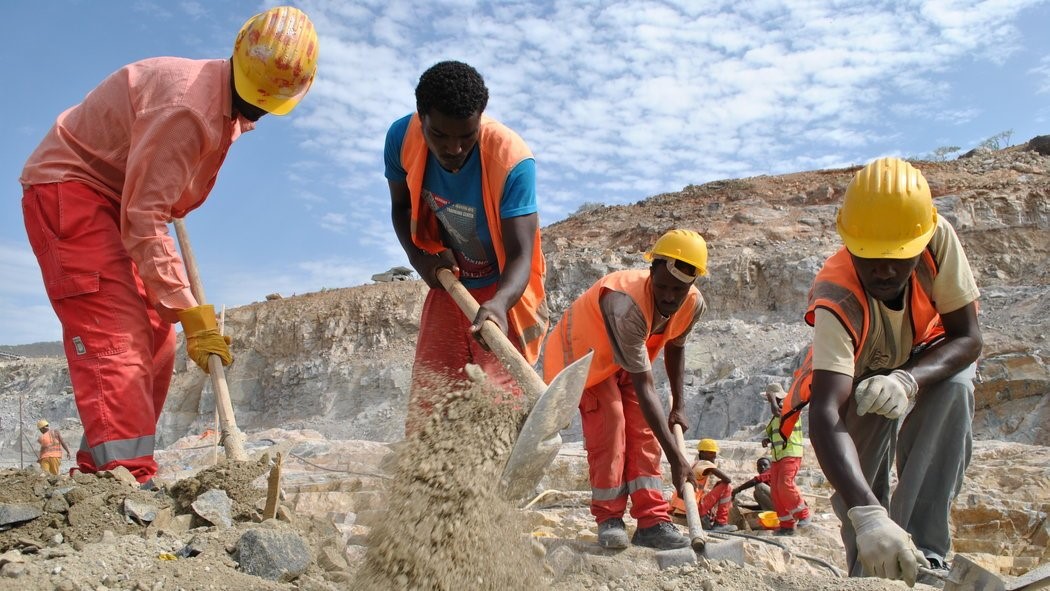Coronavirus is likely to delay the water filling of Ethiopia’s biggest dam on the River Nile by one year, a top government official working at the country’s Ministry of Water, Irrigation and Electricity revealed.
Contractors involved in metal construction works at the dam are not getting inputs needed to make the dam ready for water filling on July 2020, said the top official, who wanted to remain anonymous.
Particularly, Sinohydro, a Chinese sub-contractor who was given a project to complete the reservoir of the dam, said he’s facing challenges to import raw materials from its headquarters in Wuhan, a city where the pandemic started.
Some of the company’s staff, whose presence is crucial in the dam project, are not able to come to Ethiopia as passengers’ flights are on hold between China and Ethiopia.
Mr Kifle Hora, Project Manager of Grand Ethiopian Renaissance Dam (GERD) has however denied this.
“The project is going very well, although it is undeniable that COVID-19 is adversely impacting the progress of the dam’s construction,” he said. “But we will do whatever necessary to start water filling on July, 2020 based on the original plan.”
Ethiopia so far extended over ETB100 billion (USD33.3 billion) to construct the dam, which is now 72.4% completed, according to Irrigation Ministry of Ethiopia.
At the moment the the dam is at 86.6% completed.
A failure to begin the water filling the dam will cost the country one billion dollar, according to Mr Ashebir Balcha, CEO of Ethiopian Electric Power.
“If we are not going to start the filling by July, we will force to lose such amount of money and pay additional compensation for some parties,” he said.
Meanwhile, Egypt is pressuring Ethiopia to delay the filling and power generation of the dam through different diplomatic means, fearing it would significantly impact its water share from Nile.
On January 2020, Egypt asked Ethiopia to start the filling of the dam within the next 12-21 years. However, this was immediately rejected by authorities in Ethiopia, citing the proposal is against the national interests of the horn of African country.
A month later, the United States and World Bank started mediating the two countries and Sudan, hosting series of meetings amongst foreign and water ministers of Ethiopia, Egypt and Sudan until last month in order to resolve the disagreement between the countries over the operations and water filling of the giant Nile dam.
Even then, the US-mediated talks have not yielded fruit as Ethiopia boycotted the latest meeting in Washington because of ‘unfinished consultation with national stakeholders.’
Ethiopia also expressed its disappointment over the United States’ treasury office’s statement released on February 2020 that indicates agreement has been made over renaissance dam talks.
On the same statement, the US cautioned Ethiopia to refrain from filling and testing its giant dam on Nile before reaching an agreement with Sudan and Egypt.
“Such a statement is unexpected from a country like the US. We want the US Treasure to rectify its statement,” said Minister of Foreign Affairs, Mr Gedu Andaragachew, in a press briefing held at Prime Minister Office on March 3, 2020.
Ethiopia began construction of the dam in 2011, which triggered concerns that the massive project would cause water shortages in Egypt, a country whose economy relies on the Nile for 90Pct of its water supply for the population and for agriculture.
The construction of the dam is expected to be completed by 2022 and is expected to have an installed capacity of generating 5150MW upon being operational.

